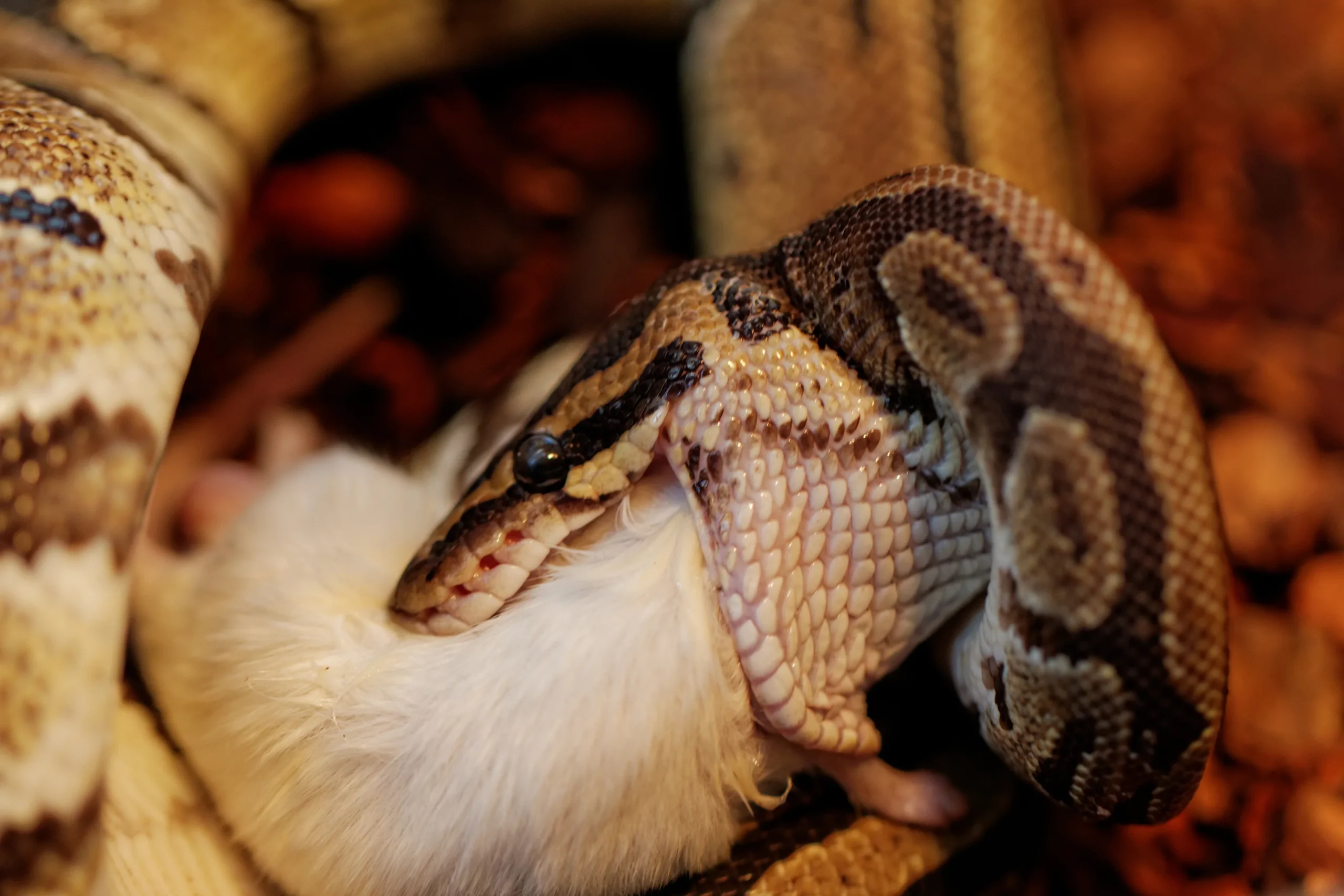premiumtix.net – Pythons are among the largest and most powerful snakes in the world, known for their impressive size and strength. These non-venomous constrictors are found in a variety of habitats, ranging from tropical rainforests to arid deserts, and they have a highly adaptable diet. This article explores the feeding habits of pythons, from their hunting techniques to the variety of prey they consume.
Hunting Techniques and Feeding Behavior
Pythons are ambush predators, relying on their keen sense of smell and heat-sensing pits to locate warm-blooded prey. They usually lie in wait, camouflaged in their surroundings, until a suitable target comes within striking distance. When ready, they strike quickly, biting the prey with their sharp teeth to gain a firm grip.
Once the prey is caught, the python wraps its muscular body around it and begins the process of constriction. The python tightens its coils with each breath the prey takes, eventually leading to suffocation. Contrary to popular belief, pythons do not crush their prey; instead, they prevent the animal from breathing, resulting in cardiac arrest. Afterward, the python swallows the prey whole, often starting with the head.
Diet in Early Life Stages
Juvenile pythons start with smaller prey, allowing them to grow and build strength for larger meals in adulthood. Their diet typically consists of:
- Insects: In the early stages, some small python species may consume insects such as grasshoppers, crickets, and beetles.
- Rodents: Mice and other small mammals are common prey for young pythons, especially for species like ball pythons and royal pythons.
- Birds: Small birds are also on the menu for young pythons, particularly in areas where avian species are abundant.
- Lizards: Juvenile pythons often hunt small reptiles like lizards, which are easy to capture and swallow whole.
Adult Python Diet
As pythons grow larger, their ability to capture and consume bigger prey increases. Adult pythons are capable of hunting a wide range of animals depending on their size and habitat. Common prey items for adult pythons include:
- Mammals: The bulk of an adult python’s diet consists of mammals. Depending on the species, they may hunt small mammals like rabbits, rats, and squirrels, or larger animals such as pigs, deer, and antelope.
- Birds: Pythons frequently hunt birds, especially in regions with dense forests. They often climb trees or strike birds from the ground, taking advantage of their ambush hunting style.
- Reptiles: Some pythons feed on other reptiles, including lizards and smaller snakes. Larger pythons may even target other constrictors or crocodilians.
- Fish and Amphibians: In aquatic environments, pythons such as the water python (Liasis fuscus) will consume fish, frogs, and other amphibians.
- Bats: Certain python species, particularly those that live near caves, have been observed hunting bats. These snakes hang from cave entrances and strike as bats fly by.
Python Species and Specialized Diets
Different species of pythons have adapted to the specific prey available in their habitats. Some notable examples include:
- Burmese Python (Python bivittatus): Known for their enormous size, Burmese pythons consume large prey, including birds, pigs, deer, and even alligators. In their invasive range in Florida, they have been observed hunting native wildlife like raccoons and opossums.
- Ball Python (Python regius): Native to Africa, ball pythons primarily feed on small mammals such as rodents and birds. Their smaller size means they hunt less intimidating prey compared to larger python species.
- Reticulated Python (Malayopython reticulatus): One of the largest snake species in the world, reticulated pythons are capable of consuming very large animals, including monkeys, pigs, and occasionally livestock.
Large Prey and Feeding Frequency
One of the most fascinating aspects of python feeding behavior is their ability to consume large prey. Due to their slow metabolism, pythons can go weeks or even months between meals, depending on the size of the prey. After consuming a large animal, a python will often rest in a safe spot while digesting, which can take several days or weeks.
In rare cases, pythons have been known to consume prey as large as antelopes or even humans, although such incidents are extremely uncommon. The larger the meal, the longer a python can go without needing to feed again.
Opportunistic Feeders
Pythons are opportunistic hunters, meaning they eat whatever prey is available in their environment. They can adjust their diet based on the abundance of certain animals and the specific habitats they inhabit. This adaptability makes them highly successful predators in a variety of ecosystems, from dense jungles to grasslands and savannas.
Conclusion
Pythons are skilled and adaptable predators with a diverse diet that reflects their wide geographical distribution. From small mammals and birds to larger animals like deer and wild pigs, pythons are capable of hunting a broad range of prey. Their impressive strength, combined with their ambush hunting techniques, makes them one of the most successful snake species in the wild. Whether in the forests of Africa or the wetlands of Southeast Asia, pythons continue to play a crucial role in their ecosystems as top-tier predators.
